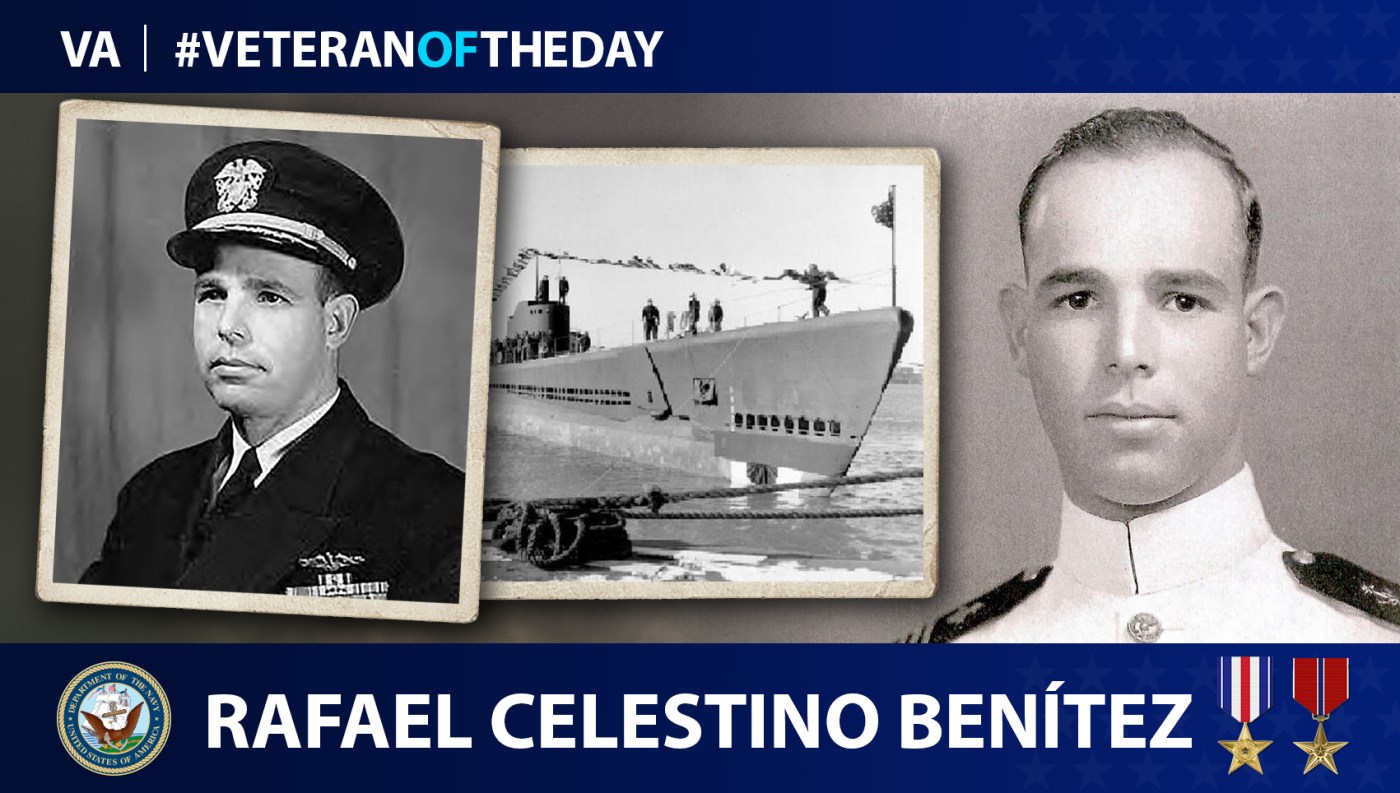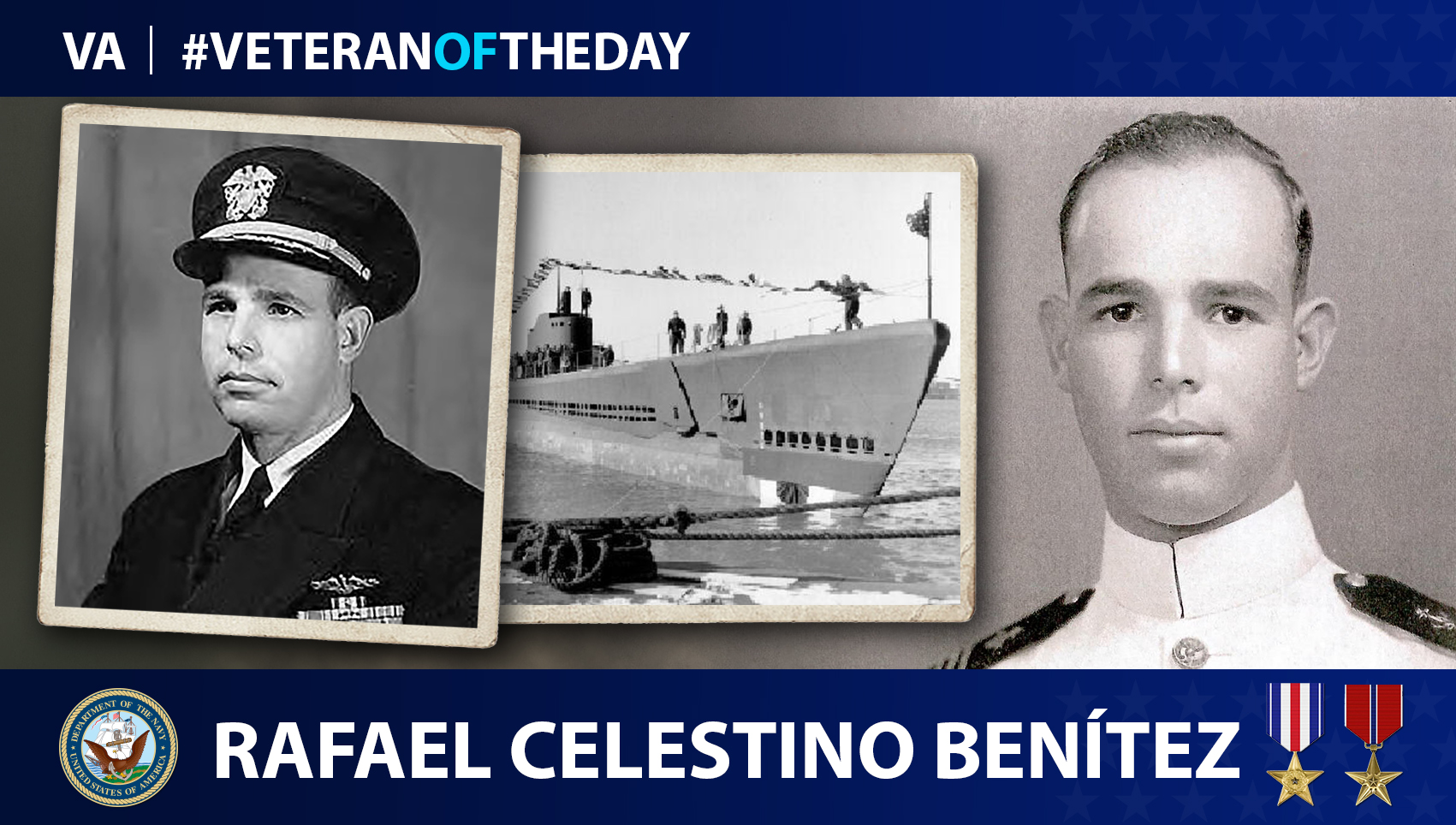Rafael Celestino Benitez was born in Juncos, Puerto Rico, in March 1917. He attended high school at George Washington High School and the Army-Navy Preparatory School, both located in New York City. In 1934, Benitez was appointed to the U.S. Naval Academy in Annapolis, Maryland, graduated in 1939 and commissioned an ensign. He received a Bachelor of Science degree in Electrical Engineering. His initial post was aboard aircraft carrier USS Yorktown.
During World War II, while serving as an assistant approach officer aboard submarine USS Dace, Benitez received the Silver Star for “expertly utilizing attack data and fire control equipment.” His actions aided in sinking a Japanese warship and two Japanese merchant ships.
In July 1949, Benitez began his command of USS Cochino, the first American naval submarine staffed with communication technicians directly supporting operators. In August 1949, USS Cochino and another submarine, USS Tusk, were sent on an undercover intelligence mission to conduct surveillance on Soviet communications in the Arctic Ocean. While submerged, a battery compartment of USS Cochino caught fire. Needing to save his men from the toxic fumes produced by the burning battery, Benitez ordered the submarine to surface. He then ordered 60 sailors, the majority of his crew, to go topside and create a human pyramid. This maneuver allowed for a large number of men to fit above the surface of the submarine. Meanwhile, Benitez and several others worked to douse the fire. Unfortunately, the chlorine gas produced by the fire made it nearly impossible to extinguish by conventional means. Expecting the worst, USS Tusk began evacuating the sailors of USS Cochino. Benitez was the last sailor to depart the doomed and sinking USS Cochino. Overall, 76 sailors were rescued due to Benitez and others’ actions.
In June 1949, Benitez earned a Bachelor of Law from Georgetown University in Washington, D.C., and served as chief, U.S. Naval Mission to Cuba in Havana, Cuba. He also served aboard several destroyers before retiring from the Navy in 1959, at the rank of rear admiral. Benitez then served as Pan American Airways vice president in Latin America. He served as a law professor, then as dean of the International Law Program at the University of Miami Law School, and dean of the Miami University’s School of International Studies.
Benitez died in March 1999 in Maryland at 81. He is remembered by his wife, Nancy, their three children and three grandchildren.
We honor his service.
Nominate a Veteran for #VeteranOfTheDay
Do you want to light up the face of a special Veteran? Have you been wondering how to tell your Veteran they are special to you? VA’s #VeteranOfTheDay social media feature is an opportunity to highlight your Veteran and his/her service.
It’s easy to nominate a Veteran. Visit our blog post about nominating to learn how to create the best submission.
Veterans History Project
This #VeteranOfTheDay profile was created with interviews submitted to the Veterans History Project. The project collects, preserves, and makes accessible the personal accounts of American war Veterans so that future generations may hear directly from Veterans and better understand the realities of war. Find out more at http://www.loc.gov/vets/.
Writer: Jack Patterson
Editors: Alexander Reza, Theresa Lyon
Researchers: Kennady Hertz, David Charles Deprez
Graphic artist: Kiki Kelley
Topics in this story
More Stories
This week’s Honoring Veterans Spotlight honors the service of Marine Corps Veteran Rodney Sickmann, who served in Iran.
This week’s Honoring Veterans Spotlight honors the service of Army Veteran Mary Edwards Walker.
This week’s Honoring Veterans Spotlight honors the service of Marine Corps Veteran Opha May Johnson, who served during World War I.







We honor the service of Rafael Celestino Benitez.